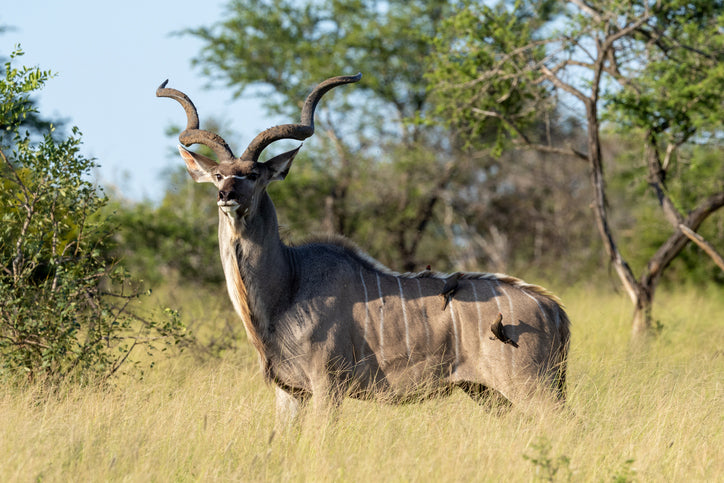
The Kudu
Share
The Majestic Kudus of Kruger National Park 🦌
In the thickets and woodlands of Kruger National Park, the kudu makes a striking figure with its elegant long horns and striped coat. These large antelopes are not only among the park's most impressive herbivores but also a proud symbol, featured prominently in the park's logo, highlighting their significance and iconic status.
Spectacular Horns and Stripes: Male kudus are famous for their long, spiraling horns, which can grow up to 1.2 meters and make them one of the most recognizable antelopes. Both males and females have a distinctive body with vertical white stripes and a greyish-brown coat that provides camouflage in the bushy landscape. 🍂🌀
Adapted for the Brush: Kudus are browsers that feed on a variety of leaves and plants, particularly favoring the new growth from bushes and trees. Their ability to reach higher branches is facilitated by their height and long necks, allowing them to access food sources that smaller herbivores cannot. 🌿🦒
Behaviour and Social Structure: Kudus tend to be quite secretive and are often found in small groups of females and offspring, while males are usually more solitary or in bachelor groups except during the mating season. Their quiet demeanor helps them remain unnoticed in the wild, avoiding predators. 🦌👀
Breeding and Conservation: The female kudu has a gestation period of about seven months, typically giving birth to a single calf. While not currently endangered, kudus are threatened by habitat loss and hunting for their meat and magnificent horns, making conservation efforts crucial for their continued survival. 🌍🔍
Fun Fact for Kids: Did you know that kudus are excellent jumpers? Despite their size, they can clear bushes and small trees when startled, using their powerful legs to leap away from threats. 🚀🌳